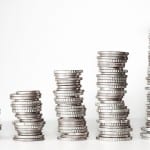How Dividends Work? – The 7 Things you need to know
By: Ned Piplovic,

While even the most inexperienced investors understand the basic concept of investing for asset appreciation, many are not sure how dividends work, why companies pay dividends or what are advantages of investing in dividend-paying securities.
As a primer for novices and as a refresher for more experienced investors, below is a list of seven basic things that every investor needs to know about how dividends work before embarking on the search for equities with the best potential to achieve a return on investment that matches an investor’s individual portfolio strategy.
How Dividends Work? – The 7 Things You Need to Know
#1 What are Dividends?
Dividends are a method for equities to distribute a portion of their earnings to their stakeholders. Sometime, all earnings payouts are referred to as dividends. However, the term dividends technically applies only to certain types of equities, such as C-Corporations or mutual funds. Other types of securities – such as S-Corporations, partnerships, limited liability corporations, trusts and estates – use the term distributions instead.
The main difference is that equities generally pay dividends from their earnings and distributions are payouts from equity. The Internal Revenue Service (IRS) treats the two types of payouts differently. While distributions will figure into an investor’s cost basis, dividends do not figure into the original cost basis of buying the stock.
The distinction between dividends and distributions is very important for tax management and other aspects of investment. However, since the concepts described below generally apply to both types, the term dividend will mean both dividends and distribution in the remainder of this article.
How Dividends Work? – The 7 Things You Need to Know
#2 Investors need more than just dividend yield to identify good investments
The dividend yield is the most basic metric for determining the rate of dividend payouts. This measure represents the ratio of the total annual payouts per share and the current share price. While the dividend yield is a necessary metric for estimating the potential dividend income in relation to the funds invested, it is not sufficient. A very high dividend yield might appear to indicate a good investment. However, investors must consider additional aspects of the equity’s performance. A rising dividend payout will result in a rising dividend yield, which is a positive indication for potential investors. However, because the dividend yield is inversely related to the equity’s share price, a declining share price also will result in a rising dividend yield. In addition to the dividend yield, investors must consider additional aspects to gain a more complete assessment of which securities are best matches for their investment portfolios.
How Dividends Work? – The 7 Things You Need to Know
#3 Investors must look for sustainable dividend distributions
The simplest indicator of dividend sustainability is the dividend payout ratio, which shows the share of earnings, or equity, dispensed to the shareholders as dividends. Certain securities — such as limited liability companies (LLCs) and C-corporations — have the liberty to distribute any share of their earnings as dividend distributions. This decision can be imbedded into the equities long-term dividend policy, or the equities board and officers can make that determination every period.
However, other types of equities — such as mutual funds or real estate investment trusts (REITs) — must distribute a minimum of their earnings or equities to retain their tax-favorable status. For instance, to remain eligible for reduced tax rates, REITs “must distribute at least 90 percent of their taxable income to shareholders annually.”
How Dividends Work? – The 7 Things You Need to Know
#4 For investors, the most important is the ex-dividend date
Among the four dividend dates, the ex-dividend date is most important to investors. While equities gather their lists of shareholders eligible to receive the next round of dividend distributions on the record date, the investors must purchase the equity’s shares before the ex-dividend date to achieve that eligibility. The reason for this is that the current settlement period for equity trading requires that all equity trades must be settled no later than two trading days after the trade is made.
Therefore, investors must purchase equity shares on the day prior to the ex-dividend date to gain the shareholder of record status at the end of the record date, which translates into eligibility to receive the subsequent round of dividend distributions. If a transaction occurs on the ex-dividend date, the seller is considered the owner of the equity and, therefore will receive the dividend payout in that period. The buyer of the equity on the ex-dividend date will have to wait until the following period to receive the dividend distribution.
How Dividends Work? – The 7 Things You Need to Know
#5 Types of dividend distributions
Equities can make their distributions as cash dividends or as in-kind distributions. In this case, the dividend versus distribution distinction matters more than for the other six “things” to know in this article. While dividends can be made in both forms, distributions are generally made in the form of cash.
Since they are much easier and simpler to implement, cash dividends are the most common type of dividend distributions. Usually, the equity mails dividend checks or transmits funds via electronic funds to the shareholders’ designated brokerage or investment account.
While the in-kind dividend distributions include property dividends, bonds of the company distributing dividends, bonds of a different corporation, government bonds, accounts receivables and promissory notes, stock dividends is the most frequently-used type of in-kind dividend distributions. Stock dividend distributions have advantages for the investor receiving the payout and the equity that makes the distributions.
The IRS treats stock dividends as stock splits. Therefore, the investor receiving this type of dividend is generally not liable for any income tax on these dividends in the year in which the payout occurs. Taxes are deferred to the year in which the investor sells the shares. Additionally, even at the time of sale, the stock dividends are subject to taxation at the capital gain tax rates, which are generally lower than ordinary income rates.
Alternatively, only a small portion of dividend payouts – qualified dividends – benefit from the lower capital gains rates. Ordinary dividends are taxed according to the higher ordinary income tax tables. The advantage of stock for the company distributing the dividends is that the company does not have to have cash on hand to distribute this type of dividend.
How Dividends Work? – The 7 Things You Need to Know
#6 Qualified dividends versus ordinary dividends
The distinction between qualified and ordinary dividends is in how the IRS treats the two dividend types for taxation. Unless specifically designated as qualified dividends and listed in box 1b of Form 1099-DIV, all dividends generally will be designated as ordinary and taxed at the ordinary income tax rates.
Alternatively, dividend distributions that meet specific IRS requirements are designated as qualified and are eligible to be taxed at the lower capital gains rates. One of the main requirements to attain the qualified dividend status set out in the IRS Publication 550 is that a U.S. corporation must distribute the dividends. However, even some foreign companies can obtain the “qualified” status for their dividend distributions
How Dividends Work? – The 7 Things You Need to Know
#7 Special Dividends
In addition to the regular dividend distributions that are paid out in regular intervals — monthly, quarterly, semiannually or annually — equities also occasionally distribute one-time dividends called special dividends. The function of these payouts is to distribute unplanned and extraordinary earnings or assets to the shareholders. The sources of funds for special dividends can be lawsuit awards, liquidation of investments, sales of business divisions, etc.
Since investing in dividend-paying equities can enhance total returns, understanding just a few basics about how dividends work, should give even novice investors the confidence to dive into dividend investing in pursuit of outsized returns on their investments.
Dividend increases and dividend decreases, new dividend announcements, dividend suspensions and other dividend changes occur daily. To make sure you don’t miss any important announcements, sign up for our E-mail Alerts. Let us do the hard work of gathering the data and sending the relevant information directly to your inbox.
In addition to E-mail Alerts, you will have access to our powerful dividend research tools. Take a quick video tour of the tools suite.








 Connect with Ned Piplovic
Connect with Ned Piplovic
